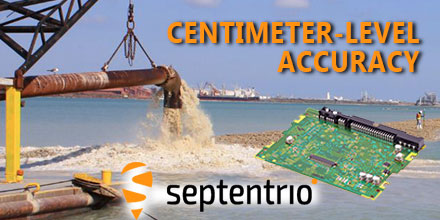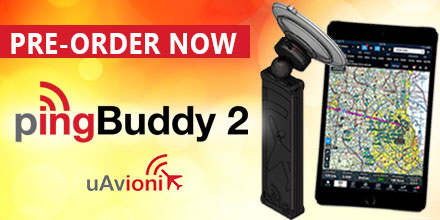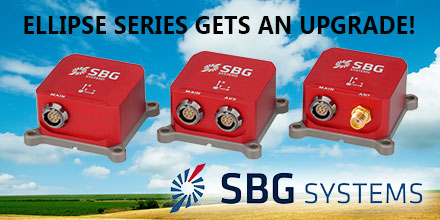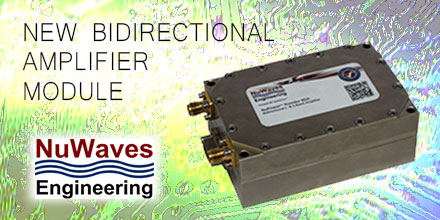Up, Up and Away!

A gust of wind. Interruption or loss of the control link. Pilot error. A dreaded flyaway.
There are many ways to lose a drone.
But when you think about the various hazards surrounding flight, outright loss may not come to mind. In fact, loss of a drone during flight is more common than you may think.
Of course, today’s drones are more and more automated and most come equipped with GPS. But that doesn’t mean things can’t and don’t go wrong…because they do. In the event of a catastrophe, the odds of finding your drone improve based on the steps you take
before such an event occurs.
Register your drone with the manufacturer
There are two basic camps when it comes to registering product with the manufacturer: those who automatically do it and those who consider it a waste of time.
Don’t neglect this step; there are many benefits to registering your drone. Some benefits include: proof of ownership, more efficient warranty services, product updates and recalls, and more. The minute you unpack your new vehicle, take the time to register it with the manufacturer.
If your drone flies away, some helpful individual may contact the manufacturer and help reunite you with your drone.
Register your drone with the FAA
As you know, as of December 21, 2015, the FAA requires all drones, model aircraft and other sUAS weighing between 0.55 and 55 pounds to be registered. You must register before your first flight.
Registering your drone with the FAA is inexpensive, easy and it can save you from getting hefty fines.
Update your drone’s GPS
If your drone has a GPS, power it up in a place that gives clear view of the sky and give the GPS time to update. Updates are automatically sent from the satellites. This step usually takes about 15 minutes but is well worth your time. Updated GPS helps ensure that in the event you need the drone to “return home” it has accurate positioning.
Tag it with a tracker
GPS-based trackers are an inexpensive and popular option. GPS trackers provide accurate positioning details of a lost drone. In the event your drone flies away, information on the longitude and latitude of its location helps you zero in on, at the very least, your search area. There are several trackers available on the market today, each with their own pluses and minuses.
Tag is with your number
It might not sound very tech savvy but putting your phone number on your drone is helpful. Consider this, if your drone flies off into the sunset, eventually, it comes crashing to the ground. There’s a chance some unsuspecting individual finds it, “Oh look, a lost drone!”
If your phone number is taped somewhere on the drone, this good Samaritan may just give you a call. Low-tech but effective.
Of course, it is always advisable for new flyers to grow their skills in open fields, away from obstructions and innocent bystanders. Keeping the drone within line of sight is also vital. Remember to fly with fully charged batteries and return home before the battery is completely drained.
Read more helpful tips for first time drone operators.
If you find a drone
If you happen to find a lost drone, there are a few steps you can take to help reunite the little buddy with his fretful owner.
One option is to locate the serial number, call the manufacture and report it “found”. If the manufacturer is able to help, they’ll outline next steps.
If the drone has a camera you can attempt to use the feed to communicate with the owner, which likely goes to their computer or mobile device. A shot of the phone number where the owner can contact you, is one suggestion.
Place an ad on Craigslist. It might seem unlikely but an ad could help you find the rightful owner.
And, of course, if the owner placed his number on the drone, simply give him or her a call.
In the event you experience a dreaded flyaway or simply lose your drone somewhere over the rainbow, consider the proactive steps listed above. Of course, there are no guarantees but the steps outlined may just help you get your drone back.
 February 13, 2017 - Septentrio GNSS technology continues to provide solutions for challenging situations.
Case in point? The Belgian dredging, environmental and engineering group DEME. They rely on the accuracy and reliability of the AsteRx family of precise GNSS positioning solutions from Septentrio.
DEME is using Septentrio’s AsteRx GNSS receivers to obtain centimeter-level accuracy for all their dredging and marine construction operations worldwide.
These receivers are designed to operate in difficult conditions. From ice-covered Arctic ports to the tropical climates of Southeast Asia; whether dredging a few meters from the coast line to constructing wind turbines kilometers out at sea.
February 13, 2017 - Septentrio GNSS technology continues to provide solutions for challenging situations.
Case in point? The Belgian dredging, environmental and engineering group DEME. They rely on the accuracy and reliability of the AsteRx family of precise GNSS positioning solutions from Septentrio.
DEME is using Septentrio’s AsteRx GNSS receivers to obtain centimeter-level accuracy for all their dredging and marine construction operations worldwide.
These receivers are designed to operate in difficult conditions. From ice-covered Arctic ports to the tropical climates of Southeast Asia; whether dredging a few meters from the coast line to constructing wind turbines kilometers out at sea.

 February 8, 2017 – Unmanned Systems Source is pleased to announce that the PingBuddy 2 from uAionix is now available for pre-order.
Units are expected to ship at the end of March 2017.
Thanks to its small form-factor and inexpensive price, the original PingBuddy ADS-B receiver was a popular choice with prosumers and hobbyists, alike.
uAvionix continues its path of innovation by offering a number of improvements to this popular item.
February 8, 2017 – Unmanned Systems Source is pleased to announce that the PingBuddy 2 from uAionix is now available for pre-order.
Units are expected to ship at the end of March 2017.
Thanks to its small form-factor and inexpensive price, the original PingBuddy ADS-B receiver was a popular choice with prosumers and hobbyists, alike.
uAvionix continues its path of innovation by offering a number of improvements to this popular item.
 January 31, 2017 – SBG Systems announced the release of a new version of the Ellipse Series, its popular product line of miniature inertial sensors.
The Ellipse is greatly improved, showing unmatched performance in attitude measurement while adding Galileo constellation to its GNSS receiver.
After thousands of Ellipse miniature inertial sensors operational on the field, SBG Systems proves again its capability of continuous innovation.
With these improvements, the Ellipse line of miniature inertial sensors strengthens its position as “best combination of innovation, performance, and reliability” while keeping the same form factor and price level.
Due in part to its small form factor and powerful performance, the Ellipse Series is a popular sensor for Unmanned Systems. It is also an affordable all-in-one solution that provides accurate attitude and position in real-time for Unmanned Systems whether they are terrestrial, aerial, or marine.
January 31, 2017 – SBG Systems announced the release of a new version of the Ellipse Series, its popular product line of miniature inertial sensors.
The Ellipse is greatly improved, showing unmatched performance in attitude measurement while adding Galileo constellation to its GNSS receiver.
After thousands of Ellipse miniature inertial sensors operational on the field, SBG Systems proves again its capability of continuous innovation.
With these improvements, the Ellipse line of miniature inertial sensors strengthens its position as “best combination of innovation, performance, and reliability” while keeping the same form factor and price level.
Due in part to its small form factor and powerful performance, the Ellipse Series is a popular sensor for Unmanned Systems. It is also an affordable all-in-one solution that provides accurate attitude and position in real-time for Unmanned Systems whether they are terrestrial, aerial, or marine.
 January 30, 2017 - uAvionix Corporation based in Palo Alto, California continues to innovate within the ADS-B transceiver market.
Today, uAvionix announced the development and test of a dime-sized transceiver weighing less than 1 gram.
UAvionix worked under a Collaborative Research and Development Agreement with the FAA and other partners to test this prototype.
January 30, 2017 - uAvionix Corporation based in Palo Alto, California continues to innovate within the ADS-B transceiver market.
Today, uAvionix announced the development and test of a dime-sized transceiver weighing less than 1 gram.
UAvionix worked under a Collaborative Research and Development Agreement with the FAA and other partners to test this prototype.
 January 24, 2017 – NuWaves Engineering announced the addition of their latest miniaturized bidirectional amplifier to their line of NuPower Xtender bidirectional amplifier products.
This product is ideal for communications, telemetry and electronic warfare markets.
“We are excited to offer this bidirectional amplifier module. This product is targeted at the unmanned aircraft system (UAS) market, filling the gap in the market for small bidirectional amplifiers,” said Jeff Wells, President and CEO of NuWaves Engineering. “The NuWaves’ team takes pride in our ability to support our clients with best-in-class RF solutions, rapidly fulfilling the ever-changing needs of the Warfighter.”
January 24, 2017 – NuWaves Engineering announced the addition of their latest miniaturized bidirectional amplifier to their line of NuPower Xtender bidirectional amplifier products.
This product is ideal for communications, telemetry and electronic warfare markets.
“We are excited to offer this bidirectional amplifier module. This product is targeted at the unmanned aircraft system (UAS) market, filling the gap in the market for small bidirectional amplifiers,” said Jeff Wells, President and CEO of NuWaves Engineering. “The NuWaves’ team takes pride in our ability to support our clients with best-in-class RF solutions, rapidly fulfilling the ever-changing needs of the Warfighter.”
 A gust of wind. Interruption or loss of the control link. Pilot error. A dreaded flyaway.
There are many ways to lose a drone.
But when you think about the various hazards surrounding flight, outright loss may not come to mind. In fact, loss of a drone during flight is more common than you may think.
Of course, today’s drones are more and more automated and most come equipped with GPS. But that doesn’t mean things can’t and don’t go wrong…because they do. In the event of a catastrophe, the odds of finding your drone improve based on the steps you take before such an event occurs.
A gust of wind. Interruption or loss of the control link. Pilot error. A dreaded flyaway.
There are many ways to lose a drone.
But when you think about the various hazards surrounding flight, outright loss may not come to mind. In fact, loss of a drone during flight is more common than you may think.
Of course, today’s drones are more and more automated and most come equipped with GPS. But that doesn’t mean things can’t and don’t go wrong…because they do. In the event of a catastrophe, the odds of finding your drone improve based on the steps you take before such an event occurs.
